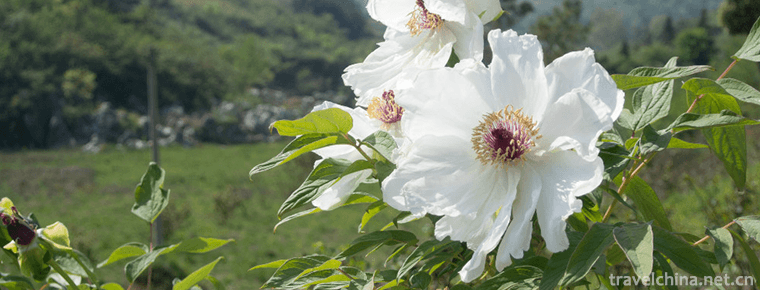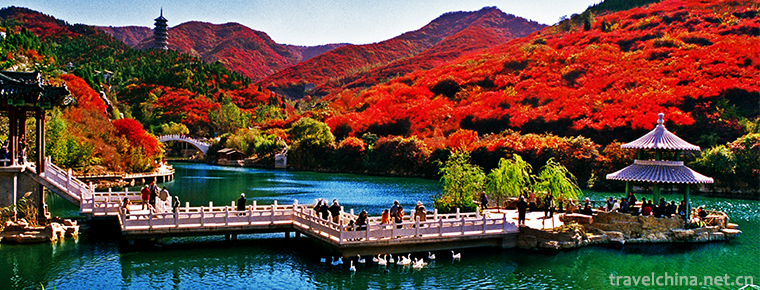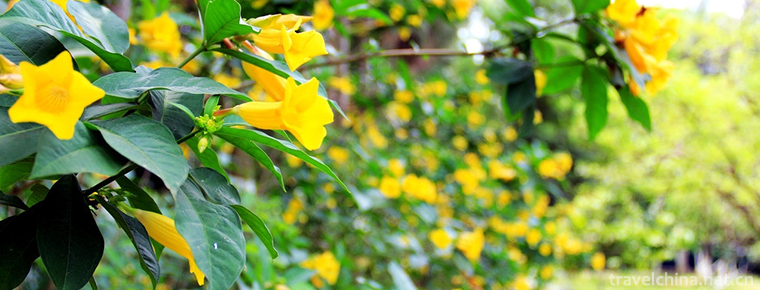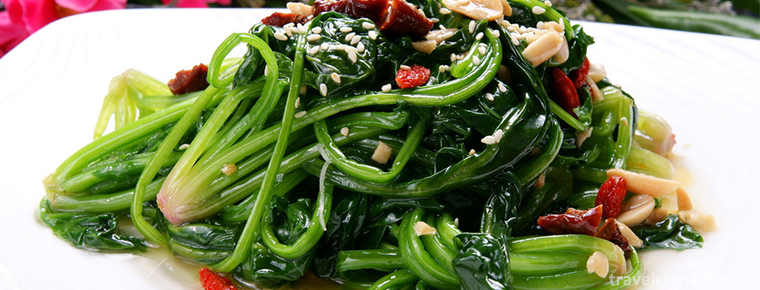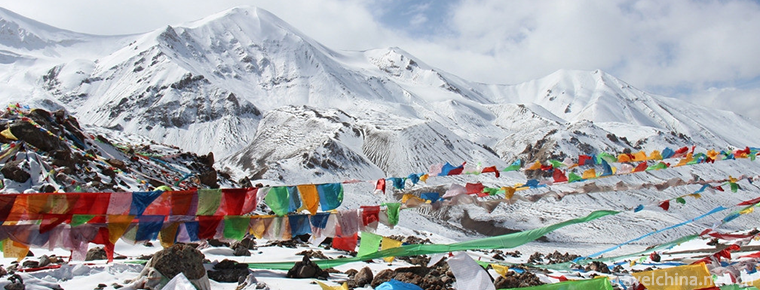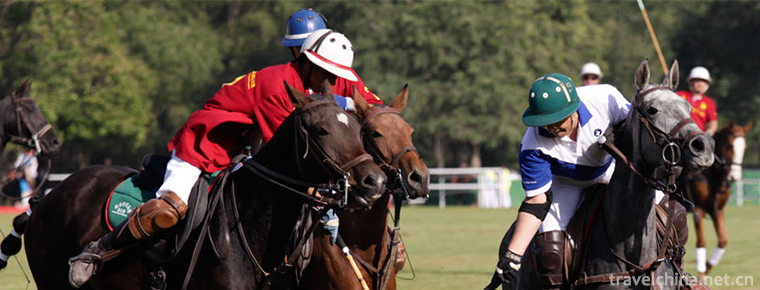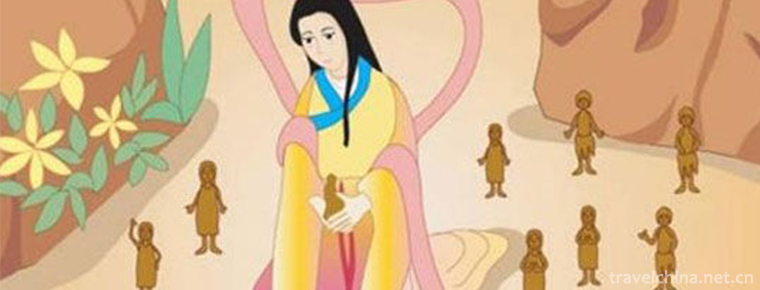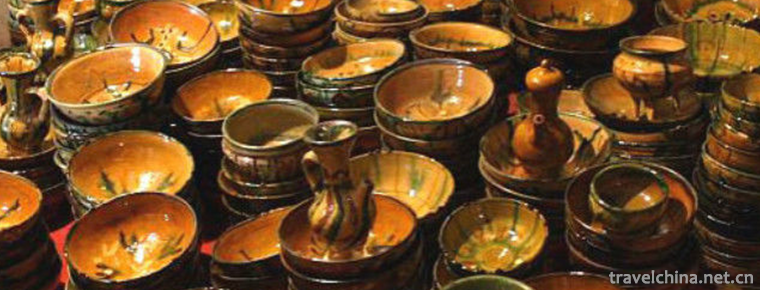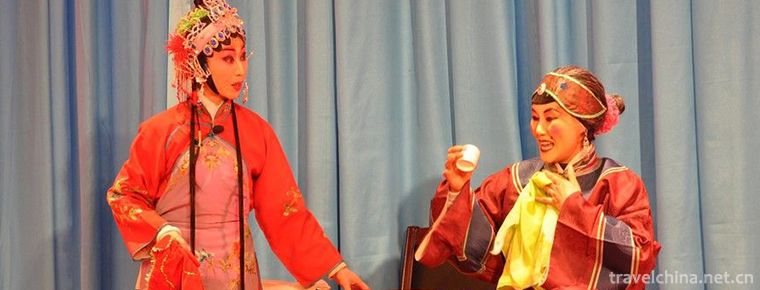Jianmenguan Scenic Area
Jianmenguan Scenic Area is one of the national AAAAA class tourist attractions, National Scenic spots, national key cultural relics protection units, National Forest park, national natural and cultural heritage, and one of the 100 red classic tourist attractions.
China's well-known tourist destination, national cultural industry demonstration base, national patriotic education base, Sichuan Nature Reserve, Sichuan Geopark, China National Geography, one of the 100 most beautiful shooting spots in Sichuan, has been included in the preparatory list of China's world cultural heritage. Jianmenguan Scenic Area is located 15 kilometers south of Jiange County, Guangyuan City, Sichuan Province.
Jianmenguan Scenic Area consists of Jianmenguan and Cuiyun Corridor, with a total planning area of 84 square kilometers, a core area of 6 square kilometers, and more than 300 ornamental attractions (areas). The main attractions are Jianmenguan, Jiangge Road, 72 Peaks, Xiaojianshan, Jianggong Temple, Jiangwei Tomb, Deng Ai Tomb, Zhonghui Old Bastion, Jinniu Road, Houguan Gate, Stalagmite Peak, Liangshan Temple, Leiting Gorge and Cui. Pingfeng, Xianfeng View, Ancient Cambridge, Zhigong Temple, 4D Cinema, Bird's Road, Glass Landscape Platform, etc. are the important nodes of Dajiuzhai Ring Line in Sichuan Province and the support centers of Shudao Three Kingdoms'cultural high-quality tourism routes.
Jianmenguan is a combination of Shudao culture, Three Kingdoms culture, war culture and red culture.
Development and construction
In 1992, Jianmen Shudao Jianmenguan Scenic Spot was jointly developed, protected, managed and managed by Jiangee County Scenic and Scenic Scenic Bureau and Cuiyunlang Management Station of Jiangee County Forestry Bureau.
Opening to the outside world in August 1993.
In 2003, Jianmenguan Scenic Area Development and Construction Management Committee of Jiangee County and Jianmenguan Scenic Area Development Co., Ltd. of Sichuan Province were established. Jianmenguan Tourism Development has formed a new mechanism of "government-led, enterprise-oriented, market operation and social participation".
In 2006, Cuiyunlang Scenic Area was established as a national 4A-level tourist attraction.
In 2008, the Wenchuan earthquake on May 12 caused serious damage to the scenic spots. Jiange County integrated and raised 350 million yuan of funds to carry out development and construction according to the national 4A level scenic spots standards, highlighting the "customs, roads and people", and completed planning, dismantling, customs repair, road construction, composition, supporting, greening, pollution control and other projects. After reconstruction, the tourist area of the scenic spot has expanded 50 times, more than 90 new spots have been added, and experiential projects and facilities such as 4D cinemas, geological museums, high-altitude sliding ropes, archery fields, Bagua Garden, sightseeing bottle cars and sliding poles have been built.
In 2010, Jianmengguan Scenic Area was rated as a national 4A-level tourist attraction.
In 2011, the reconstruction and expansion project of Cuiyunlang Scenic Area was implemented, and the construction of visitor centers, parking lots, footpaths and tourism supporting facilities was completed. The tourist routes of the scenic area increased from 800 meters to 3800 meters, the area of the scenic area increased nearly five times, and the total investment of the project was 35 million yuan. The Cuiyun Lang Scenic Area has updated various signs and trash cans, added more than 30 rest facilities and installed monitoring system.
In 2011, the Jianmenguan Scenic Area Development and Construction Management Committee was adjusted to the Jianmenguan Scenic Area Administration Bureau, which is responsible for the management of the scenic area.
In 2013, Jianmenguan Scenic Spot launched the construction of 5A Intelligent Scenic Spot. According to the national 5A Scenic Spot construction standards and requirements, combined with the characteristics of Jianmenguan tourism resources, two scenic spots, Jianmenguan (4A-level scenic spot) and Cuiyunlang (4A-level scenic spot), were built into a national 5A-level scenic spot which fully utilized digital technology and mobile Internet technology.
July 2015 was classified as a national 5A scenic spot, and the hardware and software facilities of the scenic spot were upgraded and reformed in an all-round way. The infrastructure construction and service upgrading of scenic spots have invested 69 million yuan in succession.
Origin of place names
During the Three Kingdoms Period, Zhuge Liang, the Prime Minister of Shuhan Dynasty, took Han De County (Zhijin Hanyang Town) as his "road from Dajian to Xiaojian Pass, 30 miles from Dajian to Lianshan Pass, which was extremely dangerous". Here, he "chiseled stones and overhead as flying beam Pavilion road, and traveled through it". At Dajianshan cliff, he cut off two cliffs and built stones as doors, set up garrisons and guarded them. It was called Jiange Pavilion, which became a military key pass.
Since the Sui Dynasty, Shaanxi and Gansu's route to Sichuan was changed from YueNiutou Mountain in Jianmeng County to Damu Gate through Damo garrison (known as Damushu in folk). The Pavilion Road between Xiaojian and Dajian Gate was gradually abandoned. The name of Jianke Gate was also changed from the abbreviation of Jianke Dao to another name of Jianmen Gate. Therefore, the names of "Jian Ge" and "Jian Men" used in many historical books from Tang to Qing Dynasty all refer to the closure of Jianmen. In the second year of the Republic of China (1913), after Jianzhou was changed to Jiange County, "Jiange" only refers to the name of the county.
Jianmenguan Scenic Area is located 15 kilometers south of Jiange County, Guangyuan City, Sichuan Province. Its central coordinates are 105_35'08"longitude East and 32_148'05 latitude north. Its total planning area is 84 square kilometers and its core area is 6 square kilometers.
topographic features
Jianmenguan Scenic Area is located in the fault-fold zone in the northern margin of Sichuan Basin. It is the main branch of Jianmenshan Mountain in Longmen Mountains. It belongs to the Cangxi Formation (Jianmenguan Formation) under the Cretaceous of Mesozoic. Jianmenguan conglomerate is composed of massive purple-gray conglomerate and purple-gray mudstone.
geology
Jianmen Mountain was formed in the long geological tectonic movement. The Jianmen pluvial deposit at the foot of Longmen Mountain in the northern edge of Sichuan Basin formed huge thick conglomerate, which exposed on the surface. It is called Jianmenguan Formation of Chengdi Group, also known as Jianmenguan conglomerate. From top to bottom of Jianmen rock, the level of conglomerate changes from variable to few, the diameter of conglomerate decreases from large to small, and the conglomerate mudstone increases gradually. The rocks are unevenly inclined to the southeast, with steep north slope and gentle South slope. These geological characteristics cast a strange danger of Jianmen Mountain.
Jianmen Mountain is located in the fault-fold zone in the northern margin of Sichuan Basin. During the Jurassic period (about 240 million years ago), mountains were uplifted around Sichuan and lakes were formed by basin water. Because of strong weathering erosion, mountains provided abundant sediments for Lake basins. Formation of North and South Lake Bahu and Shuhu. During the Cretaceous period (14-065 million years ago), the Jianmen Mountains were located in the front of the Longmen Mountains in the northern edge of Shuhu Lake. When the Longmen Mountains rose strongly, the Jianmen pluvial deposits and Jianmen conglomerates formed. During the Himalayan movement, the Longmen Mountains rose again strongly, and the Longmen Mountains were highlighted again.
Climatic characteristics
Jianmenguan Scenic Area is a subtropical humid climate zone with mild climate, abundant rainfall and distinct seasons. The average temperature is 14.0, the average temperature in the coldest month is 4.2 and the average temperature in the hottest month is 24.5. The annual average precipitation is 1075.ml, and the rainy season is May-October, accounting for 87.4% of the annual rainfall. Snow concentrates in January-February, the area above 800 meters above sea level has more snow; the distribution of sunshine is uneven, there are more cloudy weather in autumn and winter, and it is difficult for sunlight to reach the ground, with an average of 125 days, accounting for 34% of the whole year; the relative humidity is 74%.
Main attractions
Jianmen Guanguanlou
The Guanlou buildings built at Jianmen Pass many times in successive dynasties were destroyed by war, rebuilt in Ming Dynasty, repaired several times in Qing Dynasty, and completely demolished in 1935 when the Sichuan-Shaanxi Highway was repaired in the 24th year of the Republic of China. The Guanlou which was rebuilt in 1992 is opposite to the new Guanlou that you can see. The May 12 earthquake in 2008 seriously damaged the Guanlou. In 2009, Jiange County decided to rebuild the Guanlou on the original site of the Qing Dynasty Guanlou. The Guanlou was rebuilt by imitating the Lighting Agent Guanlou. The building is 18.3 metres wide, 19.61 metres high and 17.7 metres deep. It has a large timber structure.
Glass Landscape Platform
"Suspended Glass Landscape Platform" is located at the highest point of the scenic spot. On the main peak of Dajianshan Mountain in Jianmengguan scenic spot, the elevation of the platform is 1163.800m. The cantilever part is made of steel structure, and the steel beam of the steel structure is made up of two kinds of "I" superposition. The suspension span of the main landscape platform is 25 mm. The platform surface is made of high-strength multi-layer laminated glass. The glass thickness is about 6 cm. The platform is about 150 m from the bottom of the cliff. The suspension length of the suspension glass viewing platform is the second in the world and the first in Asia, second only to the suspension glass viewing corridor bridge of Colorado Canyon National Park in the United States. The bridge deck design width is 3 meters, the bridge net span is about 20 meters old trees, the landscape glass platform corresponds to ancient trees, ancient wood and stone carvings, tourists can walk on it, overlooking the experience of Jianmengguan scenic area of majestic, strange, dangerous, beautiful.
Location context
Kong Ming's Statue of Liguan
The sculpture on the right side of the aisle is called Kongming Liguan. According to the Records of the Universe, "Zhuge appeared in Shu, chiseling stones and driving empty were flying beams and pavilions, where Jianmen Gate was set up for traveling." "Records of Public Places" also records: "Shu Han Chan Liang... uuuuuuuuuuuu Thirty miles to the danger of the Cabinet Road, the re-establishment of a lieutenant to guard it. According to historical records, Jianmen Gate was established by Zhuge Liang, the Prime Minister of Shu Han Dynasty. Zhuge Liang established Jianmen Gate and built Feiling Pavilion Road. He passed Jianmen Gate many times later. He also traveled to and fro Jianmen Gate many times during the expedition of Qishan to Wei Dynasty.
Liu Bei's Pass-through Portrait
Kongming Liguan is like the south. Youzun sculpture is Liu Bei, the first master of Shuhan Dynasty. After Dingdu of Chengdu, Liu Bei established Jiange County in the 22nd year of Jian'an (217 years), which belongs to Jianmen Pass. He strengthened the defense of Jianmen Pavilion. With Jianme Pavilion as the center, he linked more than 1,000 miles from Hanzhong to Chengdu into a whole, ensuring the safety and smooth passage of Jianmeng Pavilion through Jianmeng, Baishui and Yanganguan and Hanzhong in Mianxian County of Shaanxi Province. Zhuge Liang laid the foundation for Qishan Mountain and Jiang Boyue's expedition to the Central Plains. According to relevant records, Liu Bei had four trips to Jianmengguan before he became emperor, and Liu Bei, narrated in the 65th chapter of The Romance of the Three Kingdoms, had returned to Zhengmengguan to watch Zhang Fei and Ma Chao fight on his way to attack Liu Zhang in Chengdu, a total of six trips.
The statue of Jiang Wei
On the cliff west of the Guanlou Pass, there stands a giant human head. The local people call it the statue of Jiang Wei.
Also known as the warrior head. The God is wearing a helmet. At the lower right of the god, there is also a spiritual monkey crouching. The spiritual monkey faces the male pass. The stone statue is said to be the God general who stayed behind to guard the gate of Jianmen when Wuding opened the mountain. It is also said to be the incarnation of Jiang Wei after his death. It is said that the stone monkey is the monkey king on Jianmen Mountain.
Hou Temple of Ping Xiang
In the southeastern part of the scenic area, there is the Hou Temple in Pingxiang, and in the square in front of the temple, there is a statue of Jiang Wei, named Jiang Wei Point General Tai. Pingxiang Hou Temple is also called Jiangwei Temple, Boyo Temple, Jianggong Temple and Boyu Temple. Jiang Wei Temple was built in the reign of Ming Zhengde, divided into two courtyards, the front courtyard statue of Liu Guanzhang, the famous Wusheng Palace, the backyard main hall statue of Jiang Wei, the famous Zhongqin Temple. Jiang Wei Temple was rebuilt on the original site in 2009. The rebuilt Jiang Wei Temple basically maintained the original architectural style, including Jiang Wei Temple, Kong Mingzhu Shudian and Jiang Wei Tomb, which belonged to the tomb temple.
Red Star Plaza
The plank road of sword gate
It is said that during the Three Kingdoms period, Premier Zhuge Liang of Shu led the army to expel the Wei Dynasty, passing through Dajianshan Mountain and seeing the steep mountains, he ordered the soldiers to drill rocks, build flying beams and build a road to help them six out of Qishan Mountain and Northern Expedition of the Cao Wei Dynasty. Although the ancient trestle road has long been obliterated in the long river of history, it was rebuilt on the mountain peaks.
Stone bamboo shoot peak
In the middle of the cliff of Jianmen Gate, there is a huge stone. The Golden Chicken is independent of the cliff, like a bamboo shoot just emerging from the forest. The local people call it the bamboo shoot peak, also known as the stalagmite peak, according to its natural shape. Bamboo Shoot Peak is tens of feet high and does not grow a single tree or grass. On its top, it grows a luxuriant bush. Therefore, Bamboo Shoot Peak is like an angry guard guarding the Xiongguan Gate day and night.
Liangshan Temple
Liangshan Temple, at the top of Dajianshan Mountain, is located on the cliff between Peach Blossom Peak and Xiaoyao Peak, 72 Peak Peak in Jianmen, 1180 meters above sea level. Liangshan was passed down as the place where Emperor Wudi of Liang Dynasty built the ancient temple Liangshan Temple and Temple of Emperor Wudi of Liang Dynasty. Liangshan Temple was built in the Tang Dynasty. After repairs in past dynasties, it was expanded into two courtyards in the Qing Dynasty, with a building area of 947 square meters.
The Liangshan Temple is sitting in the north and facing the south. There are three golden characters of the giant plaque "Liangshan Temple" hanging high in the mountain gate. Apart from Daxiong Palace, there are Guanyin Hall, Tibetan Sutra Building, Monastery, Zhaitang, Tea Hall and so on.
Honors
In 1982, Jianmen Shudao was announced as the first batch of national key scenic spots (later renamed National Scenic spots).
In 1992, Jianmenguan Forest Farm was approved as a national forest park, known as Jianmenguan National Forest Park.
In 2010, Jianmenguan Scenic Area won the honorary titles of "National Natural and Cultural Heritage", "China's Famous Tourism Destination", "Sichuan Cultural Industry Demonstration Base".
In 2006, the site of Shudao in Jianmen was approved as the Sixth Batch of national key cultural relics protection units.
In 2009, Jianmen Shudao was included in the second batch of Preparatory List of China's National Natural Heritage and National Natural and Cultural Heritage.
In September 2010, Jianmengguan Scenic Area was listed as the national AAAA-level tourist attraction.
In June 2012, the Guangyuan section of Jianmen Shudao was officially listed in the preparatory list for the declaration of world cultural line heritage.
In July 2015, Jianmenguan Scenic Area was listed as the national AAAAA class tourist attraction.
The Sixth Batch of national key cultural relics protection units, National Forest Park, National Natural and Cultural Heritage, Chinese Red Classic Tourist Scenic Spots, Sichuan Nature Reserve and Sichuan Geopark were included in the Preparatory List of World Cultural Heritage in China, the Twelfth Five-Year Plan for the Protection of National Major Relics, and the most beautiful 100 shooting spots in Sichuan in China National Geography.
On October 9, 2016, the National Tourism Administration issued the "Red and Black List" for 11 holidays. Jianmen Shudao Jianmengguan Scenic Spot was listed as the best tourist market order scenic spot.
Red Star Square is the site of the Red Army's bloody battle at Jianmenguan. On April 2, 1935, after a fierce battle, the Red Fourth Front Army conquered Jianmen Gate, a military fortress in northern Sichuan. The Red Army's bloody battle against Jianmen Gate created a miracle in the history of war, which is one of the famous examples of the Red Fourth Front Army. The site of the Red Army's bloody battle at Jianmenguan is one of the national patriotic education bases and 100 scenic spots of red tourism. On December 22, 2009, the Red Star Square was completed, including the Red Army's Monument to the Capture of Jianmen Gate, the Red Army's Memorial Hall to the Capture of Jianmen Gate, the sculptures of generals and stone inscriptions. The bronze statues on the square are Xu Qianqian, the commander-in-chief of the Jianmengguan battle, and Wang Shusheng, the deputy commander-in-chief. On the right side of the gate of the memorial hall is the art wall of the sword gate. In front of the art wall is the road map of the Long March of the Red Four Fronts Army. The four walls of the memorial hall of the Red Army's conquest of Jianmen Gate are 72 peaks of Jianmen, and the ground is a sinking sand table. The whole memorial hall is divided into two parts. The first part mainly shows some revolutionary struggles and cultural relics left behind by the Red Army in Jiange. The second part is to watch the battle scenes of the Red Army conquering Jianmen Gate. The Museum adopts the advanced technology of glass screen back projection and projector multi-screen fusion, and vividly simulates the historical scenes of the Red Army's blood-bathing Jianmen Gate through multimedia: on April 2, 1935, the heroic soldiers of the Red Army went forward and succeeded, inserting the bright red flag into the grand Jianmen Gate with blood and life.
The plank road of sword gate
It is said that during the Three Kingdoms period, Premier Zhuge Liang of Shu led the army to expel the Wei Dynasty, passing through Dajianshan Mountain and seeing the steep mountains, he ordered the soldiers to drill rocks, build flying beams and build a road to help them six out of Qishan Mountain and Northern Expedition of the Cao Wei Dynasty. Although the ancient trestle road has long been obliterated in the long river of history, it was rebuilt on the mountain peaks.
Stone bamboo shoot peak
In the middle of the cliff of Jianmen Gate, there is a huge stone. The Golden Chicken is independent of the cliff, like a bamboo shoot just emerging from the forest. The local people call it the bamboo shoot peak, also known as the stalagmite peak, according to its natural shape. Bamboo Shoot Peak is tens of feet high and does not grow a single tree or grass. On its top, it grows a luxuriant bush. Therefore, Bamboo Shoot Peak is like an angry guard guarding the Xiongguan Gate day and night.
Liangshan Temple
Liangshan Temple, at the top of Dajianshan Mountain, is located on the cliff between Peach Blossom Peak and Xiaoyao Peak, 72 Peak Peak in Jianmen, 1180 meters above sea level. Liangshan was passed down as the place where Emperor Wudi of Liang Dynasty built the ancient temple Liangshan Temple and Temple of Emperor Wudi of Liang Dynasty. Liangshan Temple was built in the Tang Dynasty. After repairs in past dynasties, it was expanded into two courtyards in the Qing Dynasty, with a building area of 947 square meters.
The Liangshan Temple is sitting in the north and facing the south. There are three golden characters of the giant plaque "Liangshan Temple" hanging high in the mountain gate. Apart from Daxiong Palace, there are Guanyin Hall, Tibetan Sutra Building, Monastery, Zhaitang, Tea Hall and so on.
Honors
In 1982, Jianmen Shudao was announced as the first batch of national key scenic spots (later renamed National Scenic spots).
In 1992, Jianmenguan Forest Farm was approved as a national forest park, known as Jianmenguan National Forest Park.
In 2010, Jianmenguan Scenic Area won the honorary titles of "National Natural and Cultural Heritage", "China's Famous Tourism Destination", "Sichuan Cultural Industry Demonstration Base".
In 2006, the site of Shudao in Jianmen was approved as the Sixth Batch of national key cultural relics protection units.
In 2009, Jianmen Shudao was included in the second batch of Preparatory List of China's National Natural Heritage and National Natural and Cultural Heritage.
In September 2010, Jianmengguan Scenic Area was listed as the national AAAA-level tourist attraction.
In June 2012, the Guangyuan section of Jianmen Shudao was officially listed in the preparatory list for the declaration of world cultural line heritage.
In July 2015, Jianmenguan Scenic Area was listed as the national AAAAA class tourist attraction.
The Sixth Batch of national key cultural relics protection units, National Forest Park, National Natural and Cultural Heritage, Chinese Red Classic Tourist Scenic Spots, Sichuan Nature Reserve and Sichuan Geopark were included in the Preparatory List of World Cultural Heritage in China, the Twelfth Five-Year Plan for the Protection of National Major Relics, and the most beautiful 100 shooting spots in Sichuan in China National Geography.
On October 9, 2016, the National Tourism Administration issued the "Red and Black List" for 11 holidays. Jianmen Shudao Jianmengguan Scenic Spot was listed as the best tourist market order scenic spot.
Layout of scenic spots
Focusing on the themes of Shu Dao culture, Three Kingdoms culture, red culture, pass culture, post culture, poetry culture, folk culture and ecological culture, we should create special tourism products, relying on profound historical and cultural background, peculiar Danxia landform, beautiful ecological environment and rich folk culture, to deal with ancient customs, ancient roads, ancient cypress, ancient towns, ancient temples, ancient bridges, ancient temples, ancient tombs, ancient tombs and ancient times. The post station, ancient stele inscriptions, ancient battlefield and ancient poetry have been protected and utilized, and 69 million yuan has been invested successively. The cultural line of the Three Kingdoms of Shudao, the cliff sightseeing and the eco-cultural tourism line have been built.
Tourism information
traffic
Beijing (Beijing) Kunming (Kunming) Expressway, Baoji (Chengdu) Railway and Xi'an (Chengdu) Chengdu (Chengdu) High-speed Railway pass through, Lanzhou (Lanzhou) Hainan (Hainan) Expressway and Lanzhou (Lanzhou) Chongqing (Chongqing) Railway pass by, only 21 kilometers away from Guangyuan Airport. It is about 480 kilometers north to the ancient capital of Xi'an, 150 kilometers south to Langzhong, 400 kilometers south to Chongqing, 250 kilometers southwest to Chengdu, and 350 kilometers northwest to Jiuzhaigou. It is an important node of Dajiuzhai Ring Line in Sichuan Province and a support center of cultural and fine tourist routes of Shudao Three Kingdoms.
Guangyuan is about 40 kilometers away from Jianmen Gate. It can be traveled by China-Brazil at Guangyuan North Bus Station (fare 12 yuan per person).
From Jianmen Gate to Cuiyun Lang, there is Zhongba (ticket price is 3 yuan per person), and from Cuiyun Lang to Jiange County, there is also Zhongba (ticket price is 6 yuan per person).
Guangyuan is 65 kilometers away from Jiange. There are buses from long distance bus station to Jiange. The distance is about 2 hours. The fare is about 15 yuan. If you go from Jiangee County, you can take a special tour bus from Jiangee to Jianmengguan.
Admission ticket
Guanlou Scenic Area: 55.00 yuan
Liangshan Temple Scenic Spot: 45.00 yuan
Cuiyun Lang Scenic Area: 50.00 yuan
Jianmen Pass Ticket Pass (Guanlou Scenic Area + Liangshan Temple Scenic Area): 100.00 yuan
Package ticket (Jianmengguan scenic area + Cuiyun Lang scenic area): 150.00 yuan











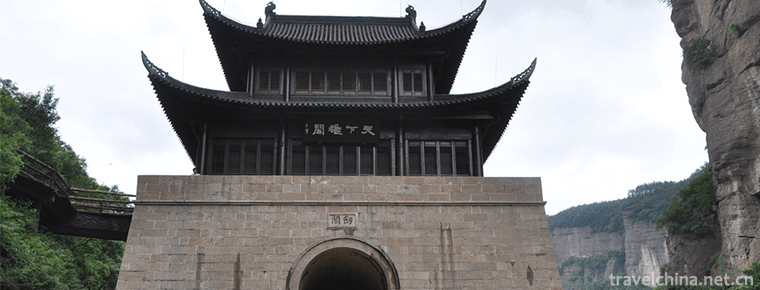
-
Mingyue Mountain
Mingyue Mountain: National tourist resorts, National Scenic spots, national AAAAA tourist attractions, National Forest parks, national geological parks, National Natural heritage, home of hot springs .
Views: 215 Time 2018-12-08 -
Yashan Huahai Stone Forest
Yashan Huahai Stone Forest Tourist Area, located in Nanling County, Wuhu City, Anhui Province, is one of the important scenic spots in Anhui's "two mountains and one lake" tourism economic c.
Views: 160 Time 2018-12-20 -
Jiulushan Waterfalls Scenic Spot
JiuRushan Waterfall Group Scenic Area - National AAAA Class Scenic Area and National Forest Park, located in Xiying Town, Jinan City, Shandong Province, is the source of Jinxiuchuan Reservoir.
Views: 205 Time 2018-12-22 -
Guangxi Medicinal Herb Garden
Guangxi Medicinal Botanical Garden is located in Xiangzhu Avenue, Nanning City, Guangxi Zhuang Autonomous Region. It was founded in 1959 and covers an area of 202 hectares.
Views: 116 Time 2019-01-13 -
Spinach with Eight Delicacies
Babao spinach is a traditional Shandong dish, which belongs to Shandong cuisine. It is rich in color, bright, delicious, light and refreshing. In addition to spinach, Babao spinach is also equipped wi.
Views: 186 Time 2019-03-25 -
Legend of Anima Qingxueshan
The Legend of Anima Qing Snow Mountain refers to the legendary Anima Qing Mountain God, who is a powerful and upright God riding a high-headed white horse, holding a Mani bag (a treasure)..
Views: 187 Time 2019-03-28 -
Polo
Polo refers to a sport in which horses are riding and polo clubs are used to hit the ball. In ancient China, Polo was called "hitting the bow". It was invented in the Han Dynasty and flouris.
Views: 137 Time 2019-05-15 -
Miao Batik Dyeing Techniques
Batik dyeing is one of the ancient folk traditional printing and dyeing techniques of the Chinese nation. As early as the Qin and Han Dynasties, the Miao people had mastered batik dyeing techniques, a.
Views: 382 Time 2019-06-05 -
Shaoyuan mythological group
Shaoyuan myth group is one of the ancient Chinese myths and legends. Refers to the general name of the creation myths and mythological prototypes circulated in Shaoyuan Town, Jiyuan City, Henan Provin.
Views: 152 Time 2019-06-14 -
Uygur moulding earthenware firing
Uygur moulding pottery has a history of more than two thousand years. After the middle of the ninth century, Uygur ancestors moved westward to the vicinity of the Tarim Basin, inherited the pottery ma.
Views: 184 Time 2019-06-26 -
Xilu Bangkok
Xilu Bangzi a Xilu Bangzi is an ancient traditional opera. Now the embryonic form of Hebei Bangzi was formed in Qingdaoguang period. Its predecessor is Shanshan-Shaanxi Bangzi, which was introduced in.
Views: 197 Time 2019-07-01 -
Dragon elbow mountain
Longcub mountain, also known as yuxu mountain, is located in Longquan Township, northwest of Huili County, Liangshan Yi Autonomous Prefecture, Sichuan Province, China. It is also known as yuxu mountain at the junction of Baiguowan .
Views: 347 Time 2020-10-16

